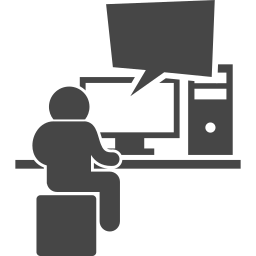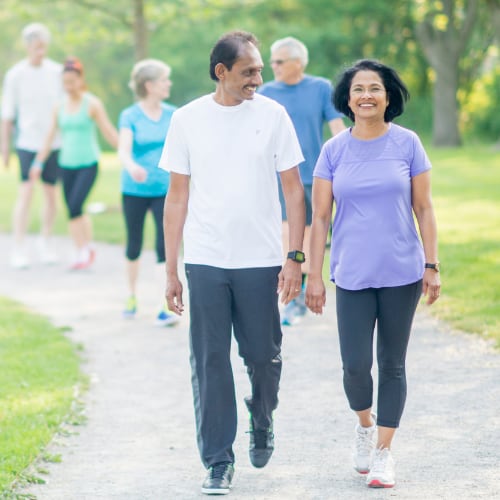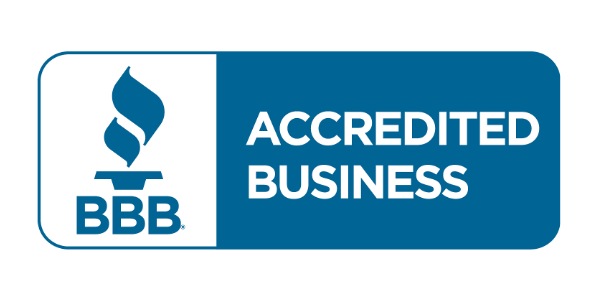 Back to Basics: The Truth About Movement
Back to Basics: The Truth About Movement
Back to Basics: The Truth About Movement

-
Main Ideas
Learning Objective
Understand the essential role of movement in maintaining physical, mental, and emotional well-being and how modern inactivity impacts overall health.
Behavioral Objective
Incorporate small, consistent movement practices into daily routines, such as stretching every 30 minutes, taking short walks, or performing functional exercises like squats or reaching.
Key Thought
Movement is life-simple, consistent practices build health, resilience, and joy.
-
Main Ideas
Learning Objective
Understand the essential role of movement in maintaining physical, mental, and emotional well-being and how modern inactivity impacts overall health.
Behavioral Objective
Incorporate small, consistent movement practices into daily routines, such as stretching every 30 minutes, taking short walks, or performing functional exercises like squats or reaching.
Key Thought
Movement is life-simple, consistent practices build health, resilience, and joy.
-
Terms
- Activity Threshold
noun
The minimum level of physical activity required to achieve measurable health benefits.
- Endorphins
noun
Natural chemicals produced by the body that reduce pain and improve mood.
- Functional Movements
noun
Movements that mimic real-life actions, such as bending, squatting, or reaching, enhance physical capacity for daily tasks.
- Inactivity
noun
A lack of movement or physical activity is often associated with negative health outcomes like obesity, cardiovascular disease, and reduced mental well-being.
- Movement
verb
The act of changing physical position or location is essential for maintaining physical, mental, and emotional health.
-
Terms
- Activity Threshold
noun
The minimum level of physical activity required to achieve measurable health benefits.
- Endorphins
noun
Natural chemicals produced by the body that reduce pain and improve mood.
- Functional Movements
noun
Movements that mimic real-life actions, such as bending, squatting, or reaching, enhance physical capacity for daily tasks.
- Inactivity
noun
A lack of movement or physical activity is often associated with negative health outcomes like obesity, cardiovascular disease, and reduced mental well-being.
- Movement
verb
The act of changing physical position or location is essential for maintaining physical, mental, and emotional health.
Introduction
Movement is an innate part of life, intricately tied to health, vitality, and emotional well-being. Yet, modern routines often lead to long periods of inactivity, disconnecting us from the natural movements our bodies were designed to perform. This topic takes you back to the basics, uncovering the fundamental importance of movement and how embracing it can unlock a healthier, more balanced life.
The Essential Role of Movement
Movement is more than just exercise-it is a biological necessity. Every joint, muscle, and system in your body depends on movement to function optimally. Regular movement strengthens the cardiovascular system, enhances joint flexibility, and boosts metabolism.
Even simple actions like walking or stretching promote blood flow, support cellular health and release endorphins, the "feel-good" hormones that elevate mood. These benefits demonstrate why movement is a cornerstone of overall wellness.
Modern Lifestyles: A Crisis of Inactivity
Modern conveniences-cars, elevators, desk jobs, and digital entertainment-have made life easier but less active. Many spend hours sitting each day, leading to muscle weakness, poor posture, and increased risks of obesity, cardiovascular disease, depression, and anxiety.
To counteract these effects, reintroducing intentional movement into daily life is essential. While structured exercise programs are valuable and consistent, small movements throughout the day often yield the most lasting benefits.
Movement as Medicine
Movement doesn't need to be intense to make a difference. Research highlights that light, regular activities such as walking, dancing, or stretching can improve flexibility, strength, and balance.
Functional movements-like bending, squatting, or reaching-mimic daily activities, preparing your body for real-life tasks. These movements reduce injury risks and enhance physical capacity, making them essential to a movement-rich lifestyle.
Understanding the Activity Threshold
The activity threshold refers to the minimum level of movement needed to benefit your health. While high-intensity exercises like running or cycling provide faster fitness gains, even small actions like standing or stretching can positively impact health.
The key is to start where you are. For some, this might mean a short daily walk; for others, it could involve yoga, swimming, or strength training. Find activities you enjoy and make them part of your routine.
Integrating Movement Into Everyday Life
Movement doesn't have to be confined to the gym. Incorporate these practical strategies into your daily routine:
- Take Active Breaks: Set a timer to stand, stretch, or walk every 30 minutes during long sitting sessions.
- Make It Social: Walk with a friend, join a dance class, or play a sport for engaging enjoyable movement.
- Reimagine Routine Tasks: Chores like gardening or vacuuming can become opportunities for dynamic movement.
The Mind-Body Connection
Movement nurtures not just the body but also the mind. Practices like yoga, tai chi, or mindful walking reduce stress, enhance focus, and promote relaxation. By embracing movement as a holistic practice, you can experience benefits for both mental and physical well-being.
Final Thoughts
Movement is life-it's not about perfection or extreme fitness goals. Instead, it's about finding natural, enjoyable ways to move consistently. By reconnecting with your body through simple practices, you can build a strong foundation for health, resilience, and joy.
Daily Movement Challenge
Objective: Incorporate consistent, small movement practices into your daily routine.
- Set a timer for every 30 minutes during your workday to stand, stretch, or take a brief walk.
- Track your total movement time in a notebook or app at the end of the day.
- Reflect on how these small actions make you feel physically and mentally.
Functional Movement Practice
Objective: Perform functional movements to improve flexibility, strength, and daily physical capacity.
- Practice 5 bodyweight squats, focusing on form and control.
- Perform 10 arm reaches (as if reaching for a high shelf) to stretch your upper body.
- Complete 10 seconds of gentle forward bends to stretch your back and hamstrings.
Mindful Movement Walk
Objective: Combine movement with mindfulness to enhance physical and mental well-being.
- Take a 10-minute walk outdoors in a quiet area, paying attention to your surroundings.
- Focus on your breath, the sensation of your feet hitting the ground, and the sounds around you.
- After the walk, jot down a few observations or reflections about how the experience felt.
Course Outline
![]() Session Expired from Inactivity
Session Expired from Inactivity
Do you want to?
9618 Jefferson Highway, Suite D-191
Baton Rouge LA 70809-9636
(888) 424-0032 |
support@supplementrelief.com
* Disclaimer: This page is available exclusively for SupplementRelief.com clients. None of the information on this website is intended to replace your relationship with your healthcare provider(s). Nothing should be considered medical advice. The information, knowledge, and experience shared on this website are the opinions of SupplementRelief.com. This site and its content are intended to enhance your knowledge base as YOU MAKE YOUR OWN HEALTHCARE DECISIONS in partnership with your qualified health professional.
* These statements have not been evaluated by the Food and Drug Administration. These products and services are not intended to diagnose, treat, cure, or prevent disease.
* There is NO GUARANTEE OF SPECIFIC RESULTS for the products or services offered, and the RESULTS CAN VARY for each individual. Any results claimed by our customers are based on individual experiences that are unique and cannot be guaranteed.
FirstFitness Nutrition and NuMedica may be promoted and sold on the internet ONLY by Authorized Resellers who have been approved by and have registered their website domain with these companies. They strictly prohibit, and actively monitor, the UNAUTHORIZED SALE or RESALE of their products in ALL online public shopping portals including Amazon, eBay, and others and into other countries. All products purchased in SupplementRelief.com are for PERSONAL USE ONLY and CANNOT BE RESOLD to others. Please report violations of Reseller Policy directly to FirstFitness Nutrition at 800.621.4348 and to NuMedica at 800.869.8100.
The content and photographs on this website are copyrighted or Licensed Material and may not be downloaded for other than personal use. Republication, retransmission, reproduction, or any other use of the content or photographs is prohibited. ©2010-2024 SupplementRelief.com.
Are you sure you want to remove this item?


